DISEASE OF UNKNOWN ORIGIN KILLING JAPANESE STILTGRASS
By Russ Richardson
During the past fifteen years the introduced weed Japanese Stiltgrass has spread across the region to become one of the most serious problems impacting the long term health and productivity of our native woodland.
Late this summer, a still unidentified Stiltgrass disease has become more widespread and it was recently confirmed by researchers at Indiana University.
So far, the disease has been confirmed in Calhoun, Roane and Lincoln Counties, West Virginia.
Stiltgrass grows very thickly and produces a heavy thatch when it dies in the fall. It is extremely flammable and very slow to rot.
It is a very coarse grass that is not very palatable, not sought after or eaten by deer, cows, horses, sheep or goats.
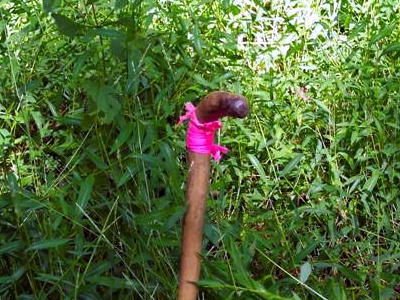
Healthy Stiltgrass can easily grow to be between
4 and 6 feet tall producing a ground cover so thick
that native trees and forest plants are choked out.
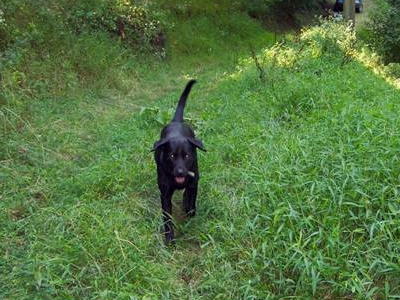
Almost any local timberland that has been logged
since the ice storm of 2003 is now infested.
Because of the rapid growth and spread of stiltgrass and the combination of environmental problems that follow an invasion, it has become one of the most studied weeds in the country.
There is increasing evidence that Stiltgrass plants may change forest soils in ways that benefit stiltgrass survival.
It is now viewed as a very serious threat to the long term health and productivity of our natural hardwood forest.
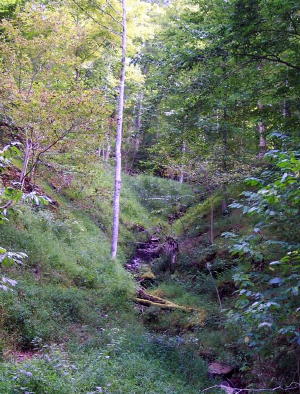
Studying a fertile site in a typical Roane County woodlot,
harvested in 1999, revealed after ten growing seasons, there
are no young trees and the stiltgrass came in so thickly, even
raspberries weren't able to compete. The only small trees are paw-
paw stump sprouts. If or when commercially valuable native trees
will ever be able to naturally seed in or return is unknown.
Japanese stiltgrass control is very difficult, producing heavy amounts of seed with rapid spreading.
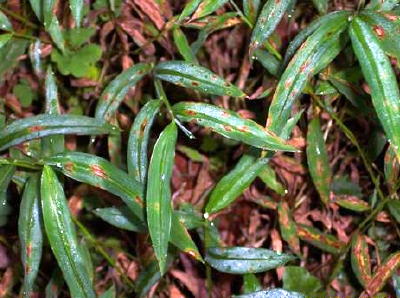
During the summer of 2008 scattered stiltgrass patches in the area
started showing signs of a disease that was weakening the plants.
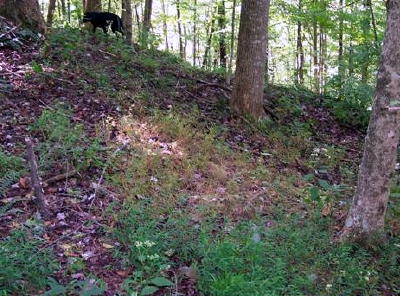
Late in the summer of 2009, the still unidentified stiltgrass disease has become more widespread and it was recently confirmed by researchers at Indiana University as sickening plants in Indiana and the WV Department of Agriculture has found the disease in Lincoln County. The yellow vegetation in the middle of the photo is a patch of dying stiltgrass. Nearly all the stiltgrass on a few acres of this property is sick, diseased or dying.
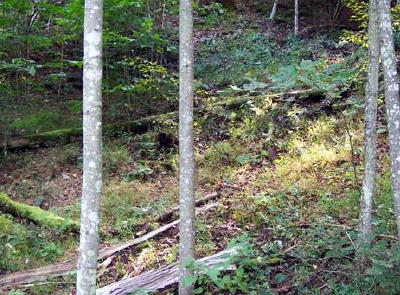
Dead and dying stiltgrass in Roane County woodland. A few weeks ago the logs on the ground were completely obscured by tall, healthy stiltgrass.
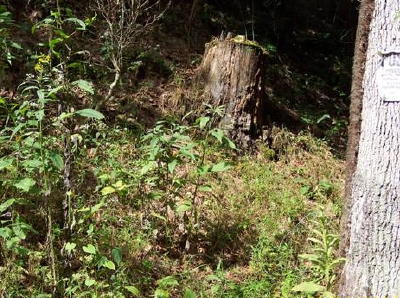
The Calhoun County white oak stump in the middle of this
photo was overtopped by stiltgrass in early August. By the
end of the month, as the stiltgrass disease progressed, the
plants had withered and died back, completely revealing the stump.
The stiltgrass disease has an unknown origin and it is yet to be found whether it is related to any known illness or disease in our native plants.
Samples of diseased plants have been sent to both WVU and Indiana University and researchers are working to identify the disease. Because so little is known about the disease and its origin and whether it is a virus, fungus or bacteria, or whether it has the potential to become valuable as a tool in Stiltgrass control.
However, the discovery and confirmation of something killing Japanese Stiltgrass has excited botanists, conservationists and ecological researchers across the country.
If local property owners have noticed stiltgrass plants dying they are encouraged to call the WV Department of Agriculture in Charleston at 304-558-2212 to report the mortality.